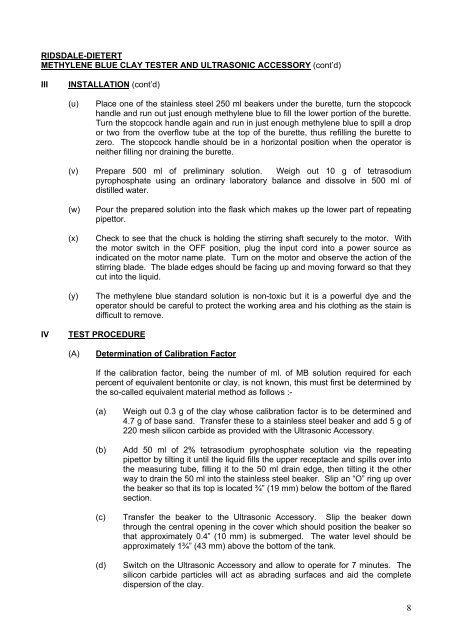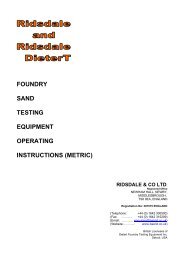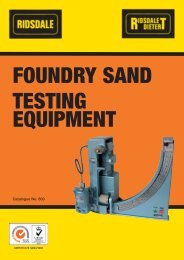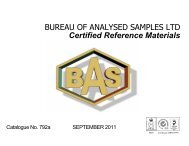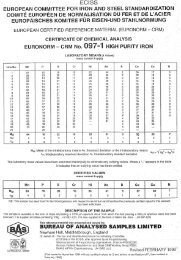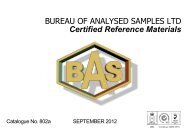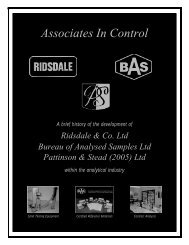AFS Foundry Sand Testing Equipment Operating Instructions Manual
AFS Foundry Sand Testing Equipment Operating Instructions Manual
AFS Foundry Sand Testing Equipment Operating Instructions Manual
- No tags were found...
You also want an ePaper? Increase the reach of your titles
YUMPU automatically turns print PDFs into web optimized ePapers that Google loves.
RIDSDALE-DIETERTMETHYLENE BLUE CLAY TESTER AND ULTRASONIC ACCESSORY (cont’d)IIIINSTALLATION (cont’d)(u)Place one of the stainless steel 250 ml beakers under the burette, turn the stopcockhandle and run out just enough methylene blue to fill the lower portion of the burette.Turn the stopcock handle again and run in just enough methylene blue to spill a dropor two from the overflow tube at the top of the burette, thus refilling the burette tozero. The stopcock handle should be in a horizontal position when the operator isneither filling nor draining the burette.(v) Prepare 500 ml of preliminary solution. Weigh out 10 g of tetrasodiumpyrophosphate using an ordinary laboratory balance and dissolve in 500 ml ofdistilled water.(w)(x)(y)Pour the prepared solution into the flask which makes up the lower part of repeatingpipettor.Check to see that the chuck is holding the stirring shaft securely to the motor. Withthe motor switch in the OFF position, plug the input cord into a power source asindicated on the motor name plate. Turn on the motor and observe the action of thestirring blade. The blade edges should be facing up and moving forward so that theycut into the liquid.The methylene blue standard solution is non-toxic but it is a powerful dye and theoperator should be careful to protect the working area and his clothing as the stain isdifficult to remove.IVTEST PROCEDURE(A)Determination of Calibration FactorIf the calibration factor, being the number of ml. of MB solution required for eachpercent of equivalent bentonite or clay, is not known, this must first be determined bythe so-called equivalent material method as follows :-(a)(b)(c)(d)Weigh out 0.3 g of the clay whose calibration factor is to be determined and4.7 g of base sand. Transfer these to a stainless steel beaker and add 5 g of220 mesh silicon carbide as provided with the Ultrasonic Accessory.Add 50 ml of 2% tetrasodium pyrophosphate solution via the repeatingpipettor by tilting it until the liquid fills the upper receptacle and spills over intothe measuring tube, filling it to the 50 ml drain edge, then tilting it the otherway to drain the 50 ml into the stainless steel beaker. Slip an “O” ring up overthe beaker so that its top is located ¾” (19 mm) below the bottom of the flaredsection.Transfer the beaker to the Ultrasonic Accessory. Slip the beaker downthrough the central opening in the cover which should position the beaker sothat approximately 0.4” (10 mm) is submerged. The water level should beapproximately 1¾” (43 mm) above the bottom of the tank.Switch on the Ultrasonic Accessory and allow to operate for 7 minutes. Thesilicon carbide particles will act as abrading surfaces and aid the completedispersion of the clay.8


